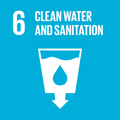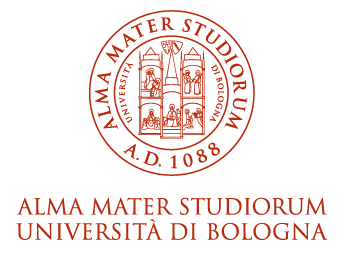- Docente: Roberto Gotti
- Credits: 8
- SSD: CHIM/08
- Language: Italian
- Moduli: Roberto Gotti (Modulo 1) Roberto Gotti (Modulo 2) Roberto Gotti (Modulo 3)
- Teaching Mode: Traditional lectures (Modulo 1) Traditional lectures (Modulo 2) Traditional lectures (Modulo 3)
- Campus: Bologna
-
Corso:
Single cycle degree programme (LMCU) in
Pharmaceutical Chemistry and Technology (cod. 5986)
Also valid for Single cycle degree programme (LMCU) in Pharmaceutical Chemistry and Technology (cod. 9262)
-
from Oct 02, 2023 to Nov 23, 2023
-
from Oct 18, 2023 to Nov 08, 2023
-
from Nov 09, 2023 to Nov 29, 2023
Learning outcomes
At the end of the course, which also includes laboratory activity, the student will have knowledge of the methods of quantitative analysis both volumetric and instrumental, as reported in the monographs of the European Pharmacopoeia (Ph. Eur.) and Italian Official Pharmacopoeia, and related to the determination of the purity of raw materials as well as to that of the content of active ingredients in pharmaceuticals. In particular, the student is able: - to apply the knowledge to real problems (quantitative analysis and quality control of pharmaceuticals) – to suggest alternative analytical methods compared to the official methods, by rationally motivating the selected approaches based on the achieved ability.
Course contents
INTRODUCTION (mod. 1, theoretical lessons)
Chemical equilibrium and concepts of solubility, concentration, ionic strength, activity, pH, Henderson-Hasselbalch equation etc..
VOLUMETRIC ANALYSIS (mod. 1).
General information on equivalence principle and titration reactions. Practical aspects in volumetric analysis: instrumentation and laboratory glassware.
-Acid - base titrations: titration curves of acids and bases. Determination of the end point of the titration: acid-base indicators. Practical aspects and applications by Ph. Eur.
-Acid – base titrations in non-aqueous medium: autoprotolysis and acid - base solvents; dielectric constant. Titration of weak bases and acids with examples by the pharmacopoeias.
-Precipitation titrations: Argentometric methods and applications by Ph. Eur.
-Complex-formation titrations: EDTA titrations. Influence of pH on EDTA ionization and complexation constants. Indicators for EDTA titrations; applications (direct titrations; back-titrations; substitution titrations) by Ph. Eur.
-Redox titrations: Overview of oxidizing and reducing agents. Redox titrations using cerium, permanganate and the system iodine/iodide.
ELECTROCHEMICAL METHODS OF ANALYSIS (mod. 1).
-Potentiometry. General principles, electrodes and definitions. Electrochemical cells as analytical probes. Most common electrodes: reference electrodes and measurement electrodes. Glass electrode for pH measuring. Potentiometric titrations and examples of applications of the pharmacopoeias.
-Biamperometric titrations: Definitions. Titrations with two measurement electrodes (for diazotization titrations and Karl - Fisher titration).
-Polarography and voltammetry: theoretical principles, instrumentation and applications.
-Conductimetry: Theoretical principles on the conductivity of electrolytes. Conductivity cell. Determination of Ka and Kb. Conductimetric titrations: examples of applications.
QUANTITATIVE ANALYSIS BY UV-vis SPECTROPHOTOMETRY (mod. 1).
-Spectrophotometric analysis in UV-vis range. Theoretical principles of UV-vis absorption. Beer-Lambert law. Instrumentation and applications: analysis of binary mixtures, derivatization reactions and gold nanoparticles in colorimetric quantitation. Applications to the analysis of drugs and examples by the pharmacopoeias.
CAPILLARY ELECTROPHORESIS (mod. 1).
General principle and instrumentation. Parameters affecting separation of charged molecules (pH, ionic strength, nature of background electrolyte). Electro-osmotic flow. Micellar electrokinetic chromatography (MEKC) and applications in pharmaceutical analysis.
LABORATORY ACTIVITY (mod. 2)
- Behavior in lab and risks arising from handling chemicals.
- Acid-base titrations: standardization of sodium hydroxide and hydrochloric acid and purity determination of various compounds according to the pharmacopoeias.
- Acid-base titrations in non-aqueous media of weak acids, weak bases and salts (hydrochlorides) according to the pharmacopoeias.
- Potentiometric acid-base titration (phosphoric acid).
- Conductimetric titrations (sodium acetate in pharmaceutical solutions).
- Precipitation titrations (argentometric methods).
- Redox titrations using permanganate, iodine/iodide etc.
- Complex-formation titrations with EDTA (calcium, magnesium, alluminium etc.) in pharmaceuticals.
- Amperometric titration of sulfonamides.
- Karl-Fisher titration.
- UV-vis spectrophotometry in quantitative analysis: determination of active ingredients (vit B12, vit C, procaine, iron etc..) in pharmaceuticals.
Readings/Bibliography
Suggested:
1) Slides from the lessons.
2) V. CAVRINI, V. ANDRISANO, Principî di analisi farmaceutica, Ed. Esculapio, Bologna, prima edizione 2017.
3) HARRIS, Chimica analitica quantitativa, Ed. Zanichelli, 2017.
Required:
1) Lecture notes available by IOL (necessary for the lab activity).
Teaching methods
The theoretical lessons are intended to provide the basic knowledge of quantitative pharmaceutical analysis by titrimetry and instrumental methods. In the laboratory activity (mod. 2, mandatory), the students will apply analytical procedures for the quantitation of raw materials and active ingredients in pharmaceuticals.
Assessment methods
The learning assessment will establish the achievement of the objects of teaching, specifically:
- Knowledge of the chemical and physico-chemical methods of quantitative analysis, as well as the acquisition of the practical ability necessary to approach the various analytical problems;
- The ability to apply the achieved theoretical and practical knowledge, for the determination of the purity of active ingredients and quality control of commercial formulations;
- The ability to critically discuss and apply the analytical methods reported in the Italian Official Pharmacopoeia and European Pharmacopoeia for quantitation of drugs and purity determination.
The assessment is established by means of laboratory practice test, to be carried out at the end of the lab activity, and final oral examination. The lab practice test has to be passed before oral examination.
The final grade will be established by evaluating the student performance on both lab activity and oral examination. The latter will consists in 3-4 questions also involving exercises, calculations etc..
Teaching tools
The theoretical lessons will be held by using slides.
The lab activity will be carried out in laboratories equipped with specific reagents and analytical instrumentation suitable for the quality control of drugs.
If necessary, the lab activity will be integrated by videos.
In view of the adopted teaching methods, the attendance to the course requires all the students to follow Modules 1 and 2 in e-learning mode (https://www.unibo.it/it/servizi-e-opportunita/salute-e-assistenza/salute-e-sicurezza/sicurezza-e-salute-nei-luoghi-di-studio-e-tirocinio) and to participate in Module 3 related to the specific training on safety and health in the workplace. Information on the dates and modality of attendance to Module 3 can be found in the appropriate section of the website of course”
Office hours
See the website of Roberto Gotti
SDGs


This teaching activity contributes to the achievement of the Sustainable Development Goals of the UN 2030 Agenda.
